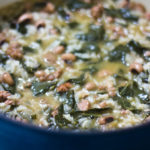Love a frothy mug of your favorite hard-to-find craft beer, but don’t care for the toll it takes on your wallet? Set up a biergarden of your own and save money on those bar markups. And if you’re planning a holiday beer tasting, all the more reason to make sure your setup is correct.
The key to an excellent pour lies partly in the glass, so read on for a guide to beer tasting glassware.

Modern beer glasses range from a few ounces up to a full liter, and typically the beer will be matched to the glass. Here are a few common vessels, and the beers to which they are best suited:
Shaker Pint Glass

Called a shaker glass because of its original use in combination with a slightly larger metal cup as a cocktail shaker, today’s pint glass was never actually designed for drinking anything, much less a beer. It wasn’t used for beer until the 1980s, when it started getting filled with craft beers. Though it’s appreciated for its relatively large serving size, it’s not particularly attractive or flattering to the flavor and aroma of beer and thus isn’t recommended for stronger or more exotic specialty brews.
English Tulip Pint

Another twentieth-century glass, this one has found an especially good partner in Irish stouts.
“Nonick” Pint

Used a vehicle for English ales since the early 1960s and popularized in the twentieth century as a glass for brandy, this pint’s deep, incurved rim and small stature make it ideal for serving strong ales and low-gravity session beers; it’s also a good choice for serving barley wines and Imperial Stouts. A bump keeps the glass’ rim from chipping and makes it easier to hold.
Stemmed Tulip or Poco Grande (Libbey)

In many ways, this glass is the best of all worlds. Its inward taper does a great job at holding the brew’s aroma, while an outward flare supports the head and fits the lips. Stemmed tulips show up rarely in drinking history, popping up with greater frequency in the late nineteenth century.
Tapered Pilsner Glass

Its narrow shape eloquently shows off the Pilsner’s pale color, while it outward-tapered shape supports the head and a footed design adds elegance and stability. The Pilsner glass we know today appeared in a similar form in the late Middle Ages but really didn’t find wide acceptance until the 1930s, when its dramatically angular form reflected the Art Deco spirit of the age.
Weissbier “Vase”

Its large size means it excels at holding foam, and its inward taper concentrates that foam to its fullest. The Weissbier vase seems to have evolved from the late medieval footed-beaker forms, but it probably didn’t develop its modern curvaceous style until the twentieth century.
Win a Set of Craft Beer Glasses!
Whether you’re hosting a holiday beer-tasting or looking for a gift for the beer-lover in your life, the right glassware is essential. Enter to win a 6-piece set of craft glass beerware by using the form below!
For more tips like this, check out Tasting Beer by Randy Mosher—just $2.99 for the holidays!
Get the Book: Amazon | B&N | ebooks.com | Google Play | iBooks | Kobo







No Comments